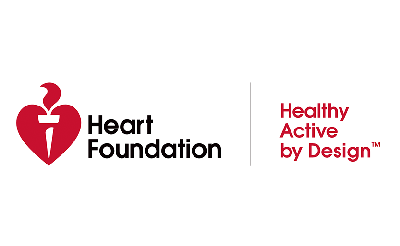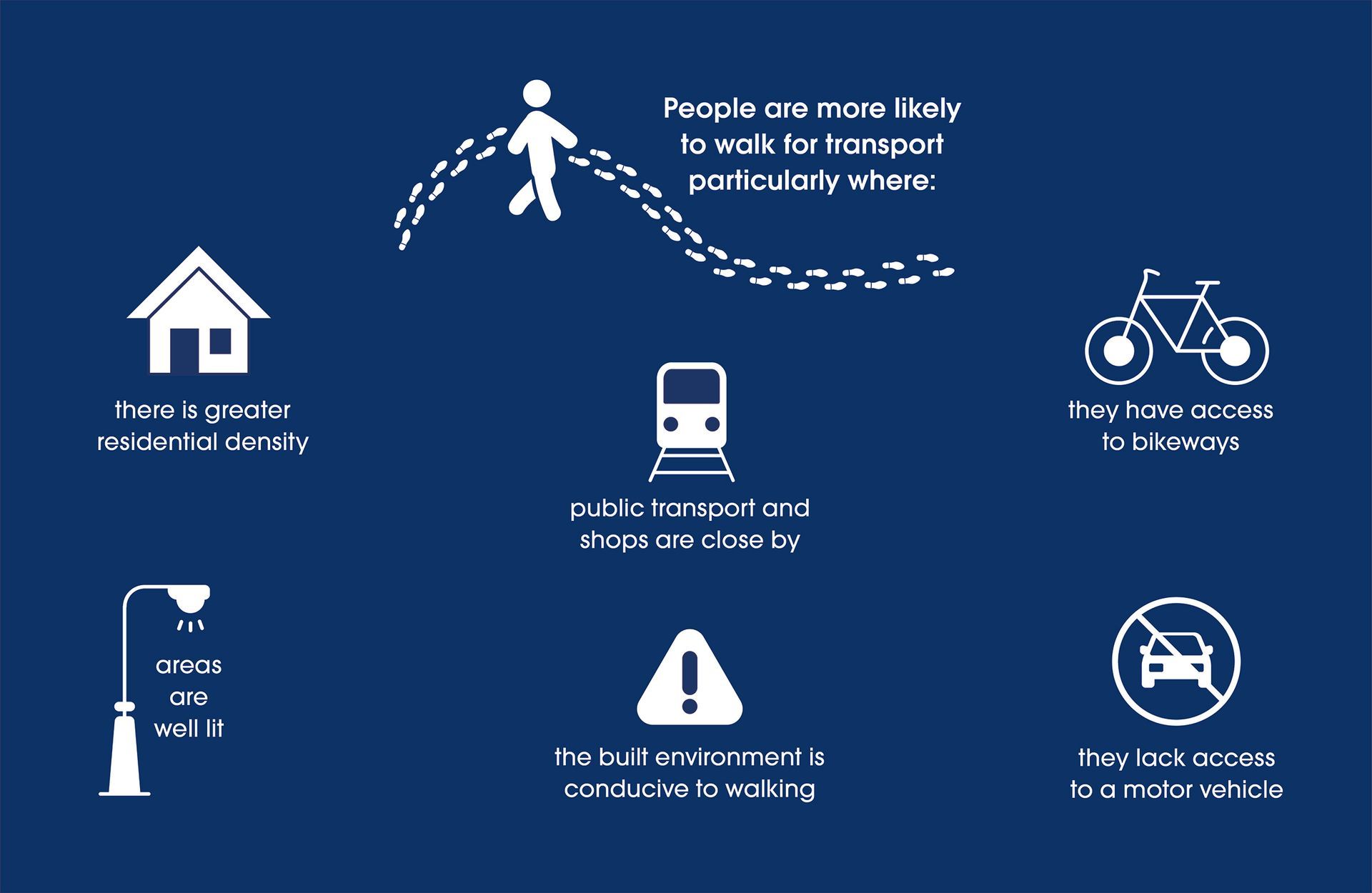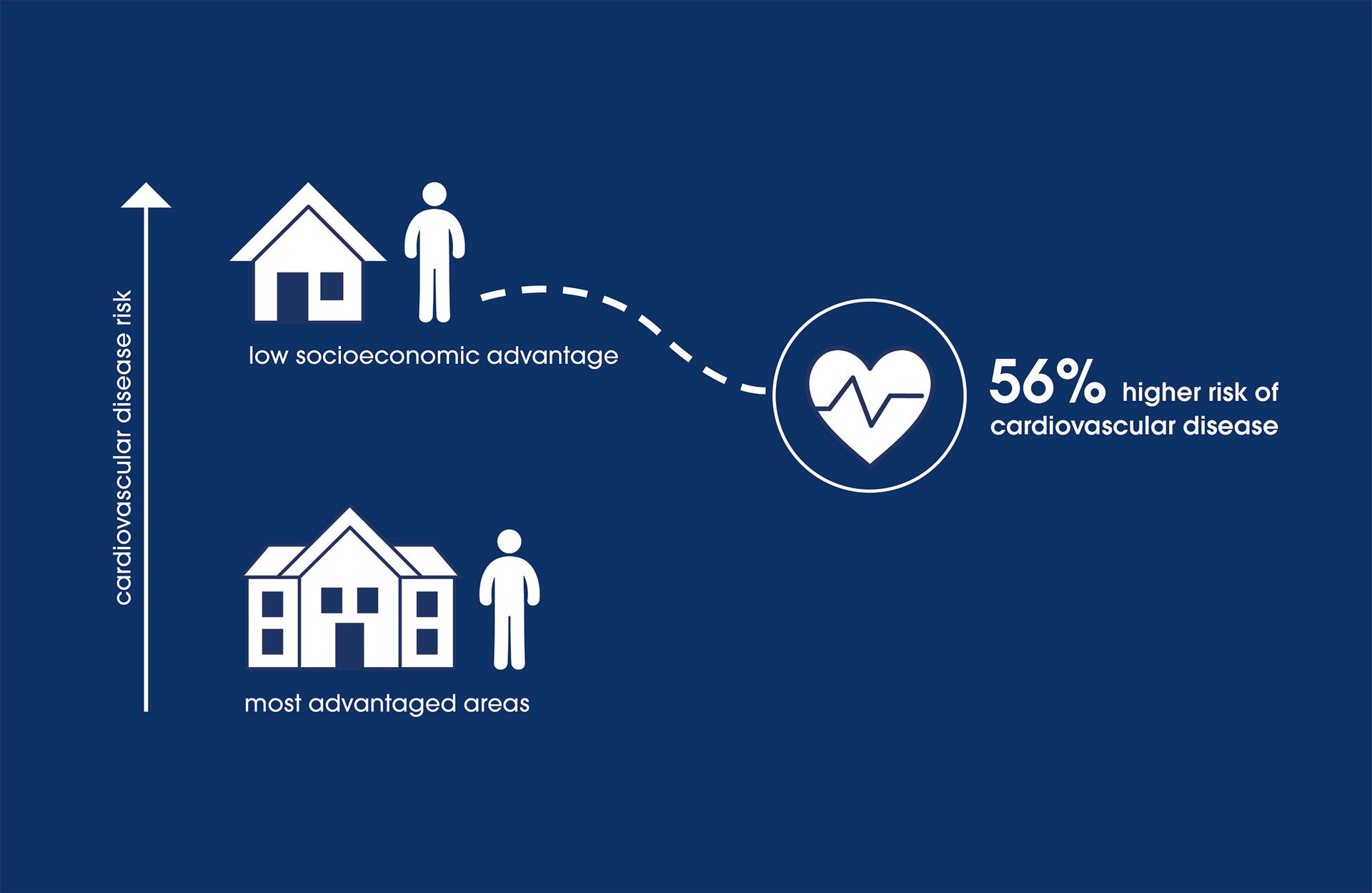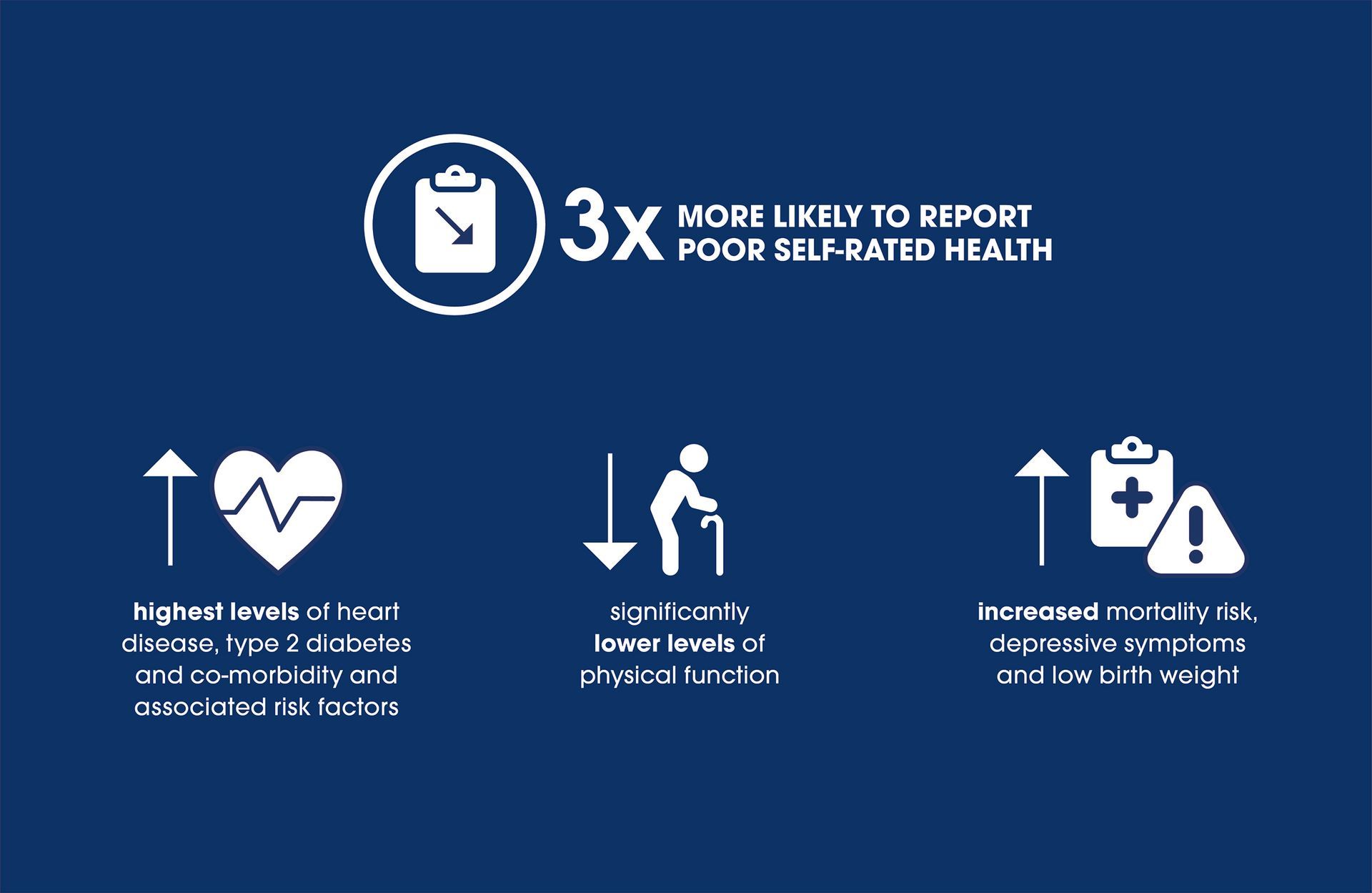Health Impact
Key concepts:
Physical activity is associated with a reduction in the risk of cardiovascular disease, 11,12,30 while physical inactivity can have the opposite effect. 31 Neighbourhood environments can influence the physical activity level of residents. 32
The link between
individual socioeconomic advantage and health is well-established. The association between
area socioeconomic advantage and physical activity and health is similarly well-established, with low area socioeconomic advantage linked to lower physical activity and poorer health compared to residents of high advantaged areas.
10,33-36
Area socioeconomic advantage and physical activity
Australian adults living in areas of lowest socioeconomic advantage tend to have a lower adherence to the Australian Government’s physical activity guidelines than those living in the areas of highest socioeconomic advantage. 23,24
People living in areas of less advantage tend to:
- report lower levels of total physical activity, moderate and vigorous activity and general walking but are more likely to walk for transport, 32,37 particularly if they lack access to a motor vehicle and the built environment is conducive to walking (eg: it has greater street connectivity, a diverse land use mix and residential density). 32,38 To read more on the importance of these design features see: Movement Networks, Destinations and Housing Diversity;
- be less likely to walk for recreation or undertake other recreational physical activities (eg: cycling, sport and swimming); 39 and
- be even less inclined to walk as they age (compared with residents of more advantaged neighbourhoods), 39 although for mid-to-older residents walking for transport at the recommended level is more likely in areas of low socioeconomic advantage that are well lit, and where there is greater residential density, access to bikeways and where public transport and shops are close by. 40
Conversely, people living in areas of higher socioeconomic advantage are more likely to participate in vigorous activity, 10,37 and to walk or cycle for exercise or recreation (but not for transport/utilitarian purposes). 37,41,42
Differences in the built and social environment likely explain some of the variation in physical activity between residents of areas of low and high socioeconomic advantage as these features often also vary with area socioeconomic advantage.
43,44
Area socioeconomic advantage and health
Australian adults living in areas of lowest socioeconomic advantage tend to be less healthy overall than those living in areas of highest socioeconomic advantage. 45-47
Indeed, they have been identified as being at the highest risk of adverse health outcomes, 33,38,39,48 including cardiovascular disease with a 56% higher risk of cardiovascular disease compared to residents in the most advantaged areas: 38
- males aged 25 and over living in the lowest socioeconomic areas of Australia had a heart attack rate 1.55 times higher, and cardiovascular disease death rate 1.52 times higher, as males in the highest socioeconomic areas; and
- females in this age group had a heart attack rate 1.76 times higher, and cardiovascular disease death rate 1.33 times higher, as those females living in areas with high socioeconomic advantage. 49
Residents in areas of low socioeconomic advantage are also more likely to report:
- poorer self-rated health (nearly three times more likely to report poor self-rated health than those living in the most advantaged areas); 50,51
- the highest levels of heart disease, type 2 diabetes, and comorbidity 52 and associated risk factors; 51
- significantly lower levels of physical function (difficulty in carrying out tasks that demand physical capability, from daily living activities to more intense activities that require higher levels of mobility, strength, or endurance); 53 and
- increased mortality risk, depressive symptoms and low birth weight. 51
This is so even after adjustment for individual level socioeconomic position (including education, occupation and household income), suggesting that the inequality in the health of residents is associated with aspects of their neighbourhood environment.
Download the Walkability in Less Advantaged Areas infographic
Next Page



